Easy tools for teaching languages to adults 50+ - Practical activities and tips
Active participation and collaborative interaction are essentials in EduVita methodology for adult language learning.
As andragogy and adult learning theories teach us, meaningful adult education should be relevant, flexible, and self-directed, building on learners’ experiences and meeting practical, real-world needs.
“Adult learners are constructing the knowledge in relation to their social surrounding - knowledge cannot be poured into or consumed by a learner.”
(Andrea Annus, Adult Educator and Researcher, Tallin University)
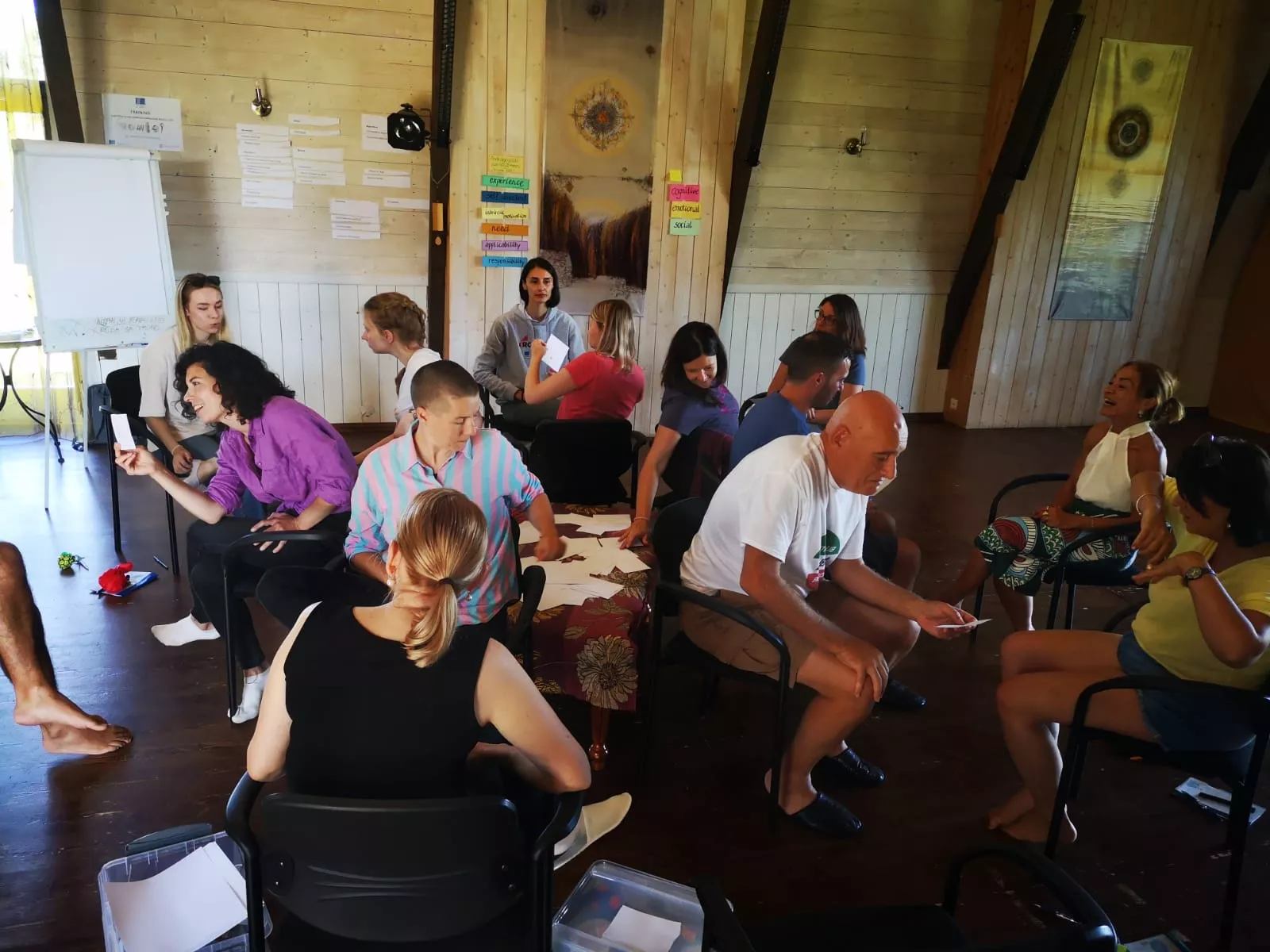
Easy Tools for Language Teachers - Training in Estonia
This awareness is fundamental when teaching a foreign language to adults 50+, as every process, to be meaningful, needs to be active, and participative, based on experiences and communication into practice. From grammar to conversation, to reading, writing, and listening, when learning a new language, every educational activity should make the learner think deeply about the things that matter and connect learning with everyday life.
At the same time, it is important to empower the learners and give them the tools and emotional support to overcome the challenges of learning a new language as adults and co-construct the learning process and space.
“Learning space is construed by all of its participants in a joint effort by communication, inclusion and facilitation processes.”
(Andrea Annus, Adult Educator and Researcher, Tallin University)
How to make language learning meaningful and fun for adult learners?
EduVita adult educators Luigi and Roberto share some of the activities they learned during the specialising training course by Gamekeskus, in Estonia “Easy Tools for Foreign Language Educators” about new methodologies and activities for language teaching. Using easy tools like paper, scissors, a ball, rope, and markers you can create countless activities that help your 50+ students engage with the language, practise it actively, and have fun within the group and…making learning a meaningful experience. How?
Here are some examples.
Activity N.1 - Live Sentences

Easy Tools for Language Teachers - Training in Estonia
Learning goal - learn how words are ordered in a sentence in English
Resources - paper, markers
Time - 10 min
Before the activity - Prepare two (or more) sentences and write each word from each sentence on a small card or piece of paper, one per student.
Step by step
- Shuffle the cards and distribute them to the students
- Ask the students to move around the class to find the other students who have the words that will form a complete sentence
- You can join the activity with a full-stop card when the sentences are completed.
Ask the students to reposition and practice verb subject inversion.
“Using games to teach and or practise English can break many barriers and help the students understand that it doesn’t matter what level of language they have, they can enjoy an activity or a short game and learn at the same time. They don’t need to understand the language, they need to understand the rules of the game and just go for it.”
(Roberto, Adult Educator at EduVita)
Live Sentences into Practice - Watch the video here
Activity N. 2 - Fun with idioms
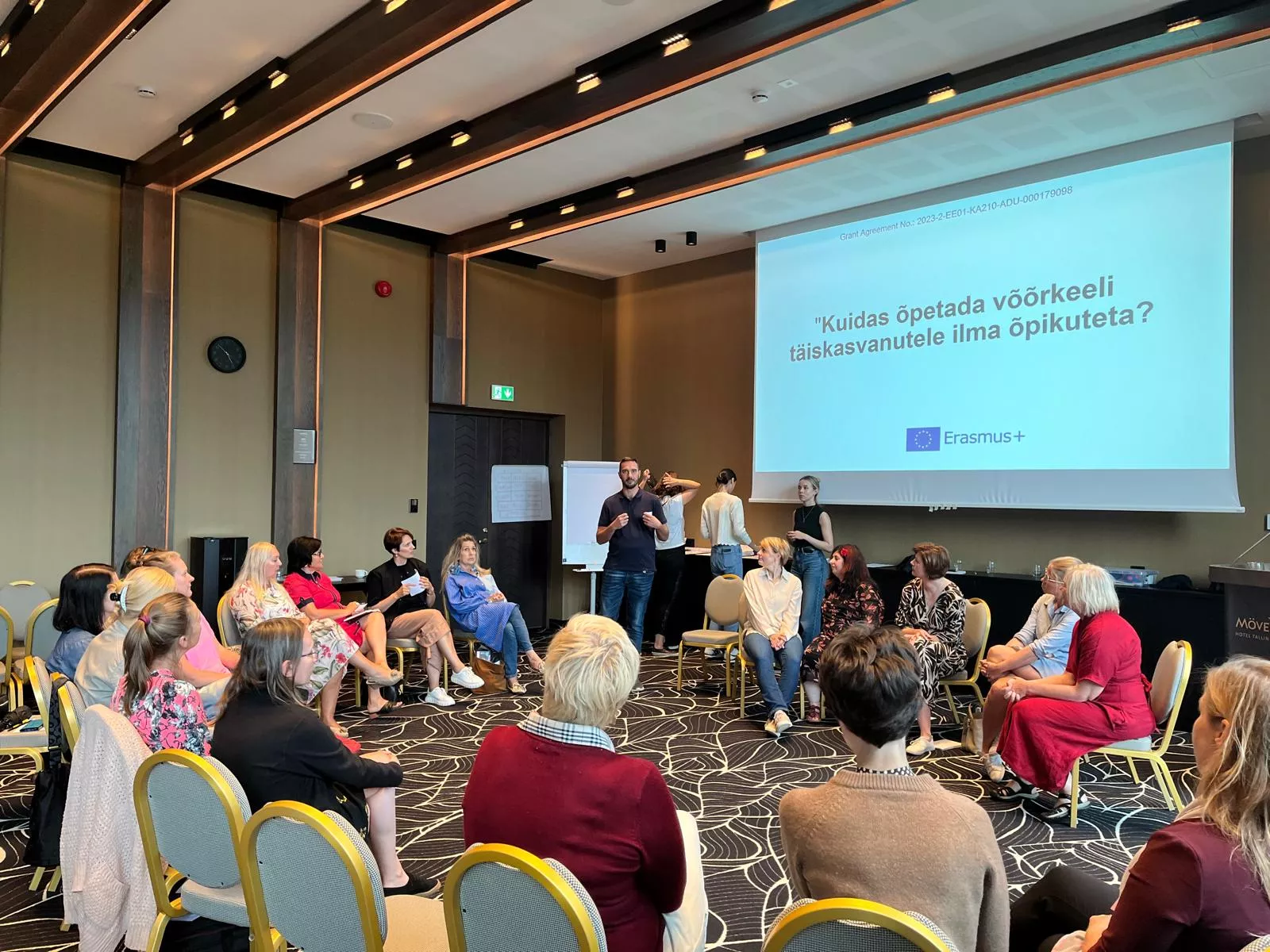
Easy Tools for Language Teachers - Training in Estonia
Learning goal - energizer or a vocabulary activity. Learning English idioms and explore their meaning and use.
Resources - paper, markers
Time - approx. 15 min
Before the activity - Prepare different cards with an idiom written on them.
Step by step
- Divide the students into two groups
- Give one of the groups a card with an idiom.
- Ask the group to act like the idiom. Explain that the other group has to guess it.
- Once the expression on the card has been revealed, ask if both groups knew about this idiom and if they know what it means, if they have ever used it, and so on.
Go on with the other idioms.
Activity N. 3 - In the shop
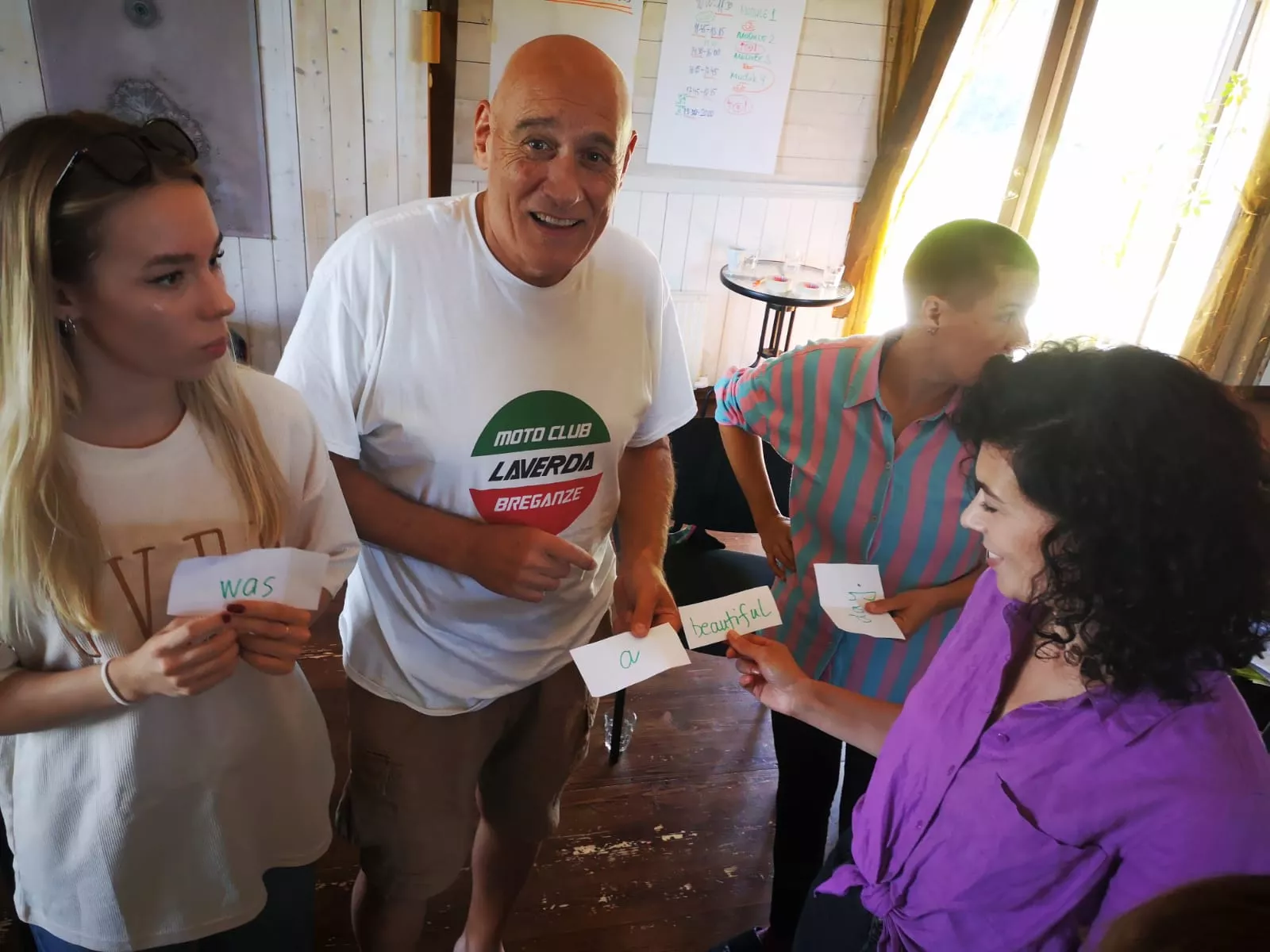
Easy Tools for Language Teachers - Training in Estonia
Learning goal - practise everyday conversations that a non-native speaker would encounter because they do not know the correct vocabulary. Improve conversational and vocabulary skills.
Resources - A4 paper cut into 10 pieces, or post-it notes, markers/pens.
Time - 10 minutes
Step by step
- Divide the group into pairs.
- Give each learner 3 pieces of paper and a pen.
- Each learner secretly writes the name of 3 things they want to buy. You can suggest subject areas like: food, clothes, household items, things from a pharmacy. The students can be creative, though.
- Model a conversation as buyer and seller. Each exchange is timed: one minute for each item.
- In each pair, the person with the longest hair goes first. They are the buyer (the client). Ask the the pair to exchange courtesies (hello, good morning, etc). Then the buyer describes the item they want to buy. They should give as much explanation as possible using characteristics like size, quantity, colour, weight.
- Each pair takes turns as buyer/seller.
- The winning pair is the one which has successfully bought/sold the most items.
Tip! The game can be developed by moving between pairs, or changing subject areas, or not providing subject areas.
Activity N. 4 - Fishing for words
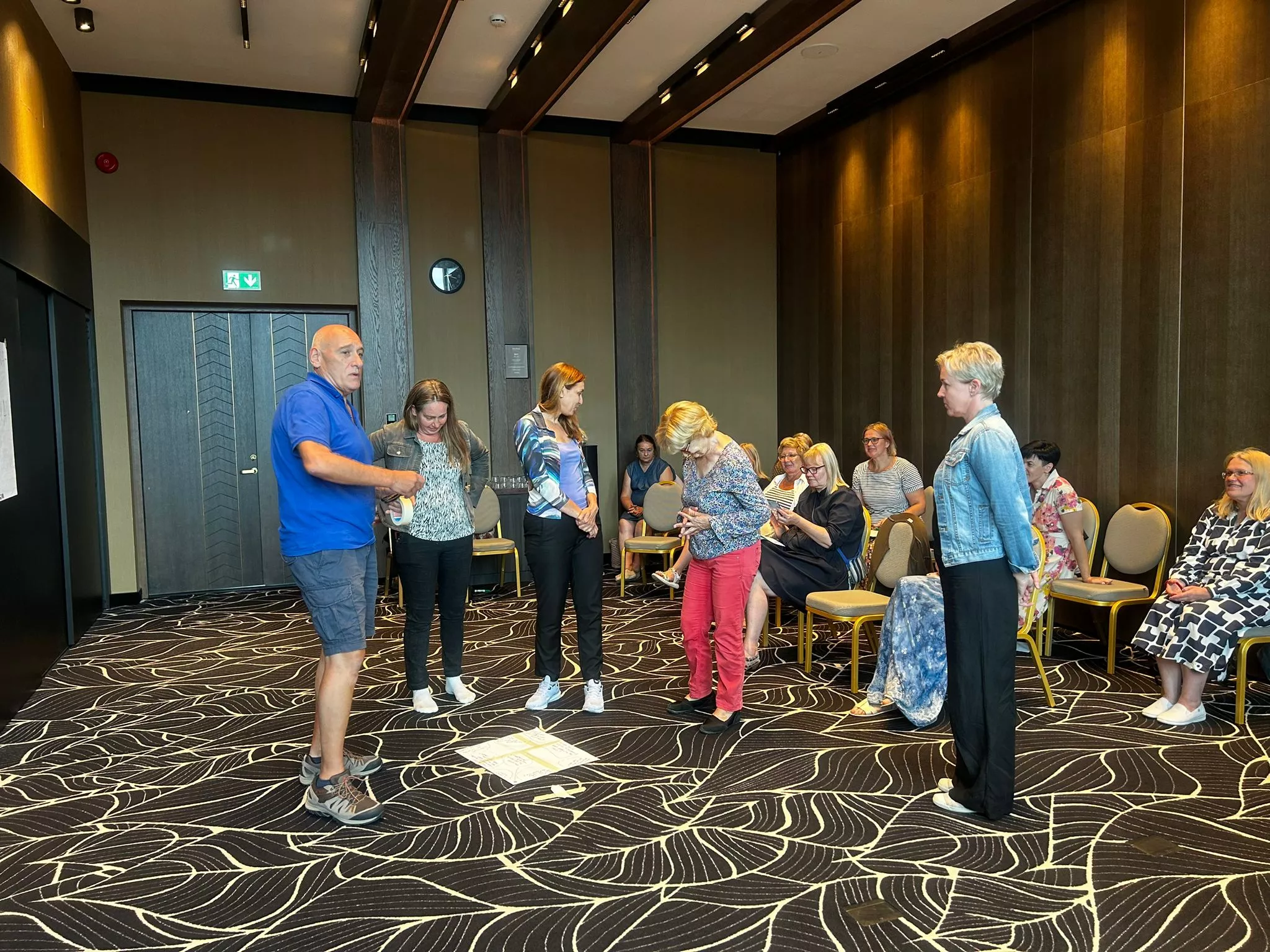
Easy Tools for Language Teachers - Training in Estonia
Learning goal - improve grammar knowledge plus vocabulary and speaking.
Resources - A4 paper cut into 8 pieces, markers/pens, rope, sticky tape. A separate sheet of A4, or use the white-board.
Time - 10 minutes
Before the activity -
1- Prepare ‘word-fish’ by writing 10-15 single words on pieces of paper. The words should be a mix of verbs, nouns and adjectives. The more words the better.
2 - Make a fishing rod, or rods, depending on how many pairs/teams. How? Create a ball of sticky-side-out tape and attach it to the end of a length of rope long-enough to reach the floor.
3 - Create a pond on the floor by placing all the words face-down on the floor.
Step by Step
- You can divide the students into pairs or groups. It’s probably best not to work alone.
- At the same time, a learner from each group ‘fishes’ for a word.
- Ask their partner or team to create a sentence using the word. They cannot fish again until the sentence is written down.
- The game ends when all the words are used.
- Give points for (a) the sentence being grammatically correct, (b) the number of words in the sentence, (c) for naming the type of word correctly as verb, noun or adjective.
The winner has the most points.
Tip! You can develop the game by introducing more parts of speech (pronouns, adverbs etc). It can also be restricted to sentences in the past or future tenses, or by only putting one type of word in the pond; only nouns for example.
“During the training in Estonia, I remembered that teaching can be more varied than just working through a book and that being creative in the classroom is fundamental. These activities provide variation from continuous book-learning. They also help to introduce new ideas in different ways and to re-visit things we’ve already done.”
(Luigi, Adult Educator, EduVita)
Online Workshop for Foreign Language Teachers
Would you like to learn more about how to teach languages without books?
Join the practical and interactive online workshop for language teachers and adult educators.
When? 19 November 17-18.30 (CET).
Participation is free and places are limited.
Please register in advance (until 14 November) via the link below.
https://forms.gle/2uGxYGpRE2Rr6EX99
The online workshop is part of the ERASMUS project ‘TRAINING: EASY TOOLS FOR FOREIGN LANGUAGES EDUCATORS’, with the partners GAME LANGUAGE CENTRE (Estonia), MTÜ Eventus Una (Estonia), EduVita (Italy), SOLSKI CENTER SLOVENSKE KONJICE-ZRECE (Slovenia) WISAMAR BILDUNGSGESELLSCHAFT GEMEINNUTZIGE GMBH (Germany), Pučko otvoreno učilište Adeptio (Croatia), Escuela Oficial de Idiomas Estepona (Spain).
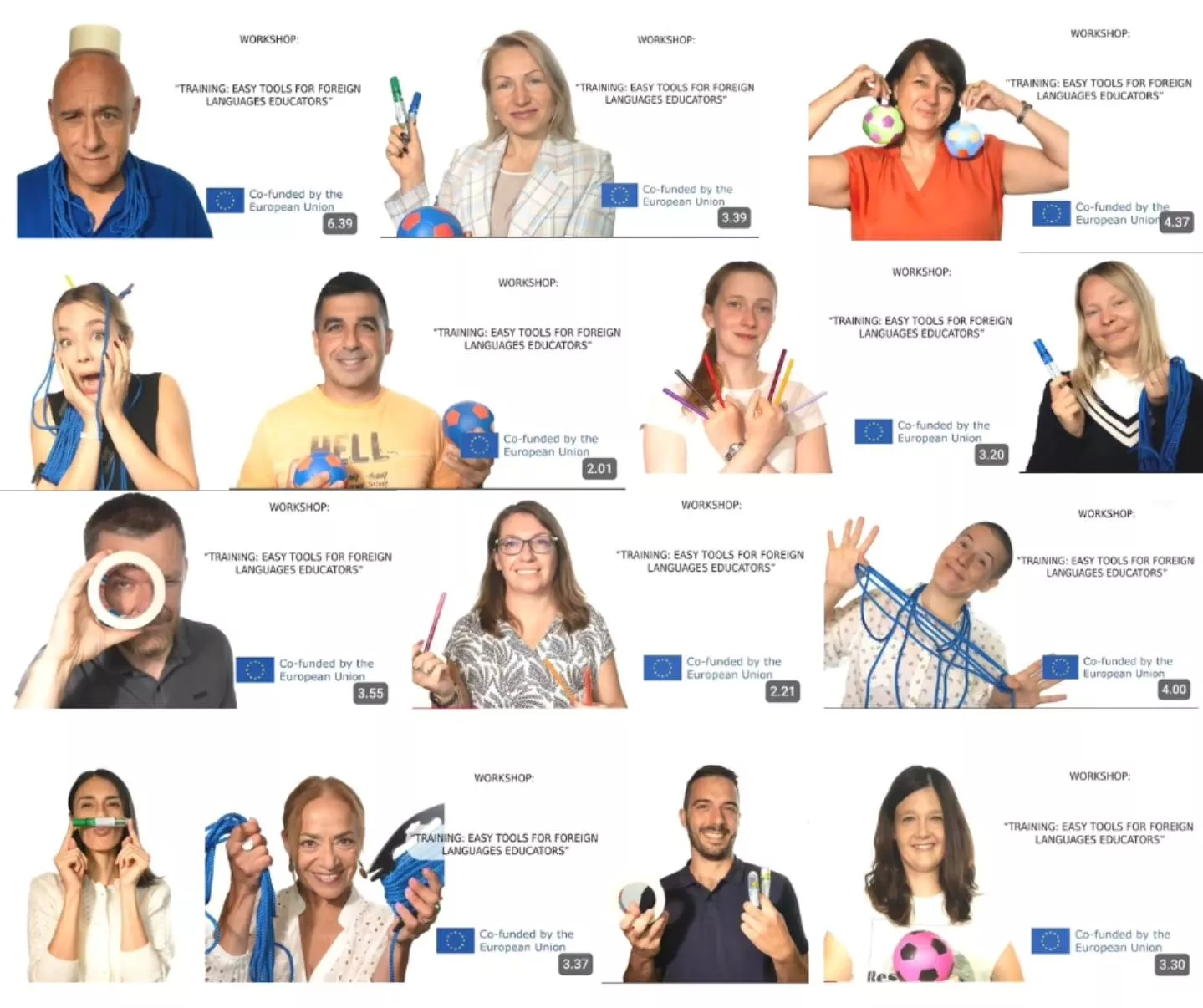
Online Workshop for Language Teachers and Adult Educators
Would you like to explore more activities with easy tools to teach languages? Check out the video guides with step-by-step instructions, created by the educators during the training.
Are you looking for more inspiration and resources for your adult education practice? Curious to learn more about EduVita and our courses and activities for adult students and trainers? Click here
Article by Filomena Locantore - EduVita
With the contributions of Luigi Di Castri and Roberto Franco - Adult educators, EduVita
Comments
Great ideas!
Fascinating ideas for teaching adults. The title caught my attention from the very beginning. And the idea of practical, relevant, student-oriented learnings fits so well with what we have been studying on the various types of learning for children as well. Especially that of the child-centered method.
I really liked the idea of having everything be meaningful and connected to their lives, when teaching adults. Personally, I feel that each student learns better when they see the value of what they are learning and how they can use it.
The ideas of EduVita education for adults are creative, active and an excellent way to get the adults actively learning English.
I am continually searching for activities to give my students opportunities to use what they are learning. The creative methods of learning sentence structure and practicing vocabulary in this article were something I would like to try with my current students in school, as well as when I teach my next adult class.
Thank you for the informative article!





Great examples
That is true that during a foreign language acquisition, for adult learners it is crucial to create a perspective that is closely related to the everyday situations. Also, in order to achieve an effective and productive learning process, a student needs to be in the appropriate contextual reality, e.g. it would be not a great idea to speak about outdated or not actual things and events because it is perceived as a non-essential information anymore, therefore, the process of memorizing language aspects through the outdated information is less effective. On the other side, when we try to interact and “play” games that are contextually related to everyday life and cover some basic needs for communication (as it was presented by your examples) – the process of learning is much better.